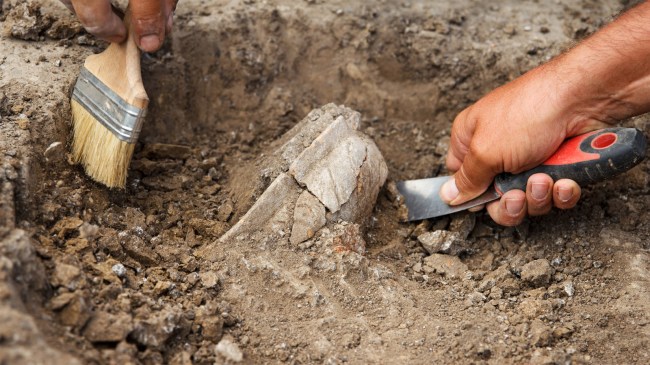iStockphoto

Audio By Carbonatix
Scientists are stumped by a mysterious mummified creature with human-like hands that was discovered during renovations of a historic building in Michigan. The strange creature, dubbed the Capacabra, was found at Michigan State University in East Lansing during renovations of Cook-Seevers Hall.
The remains were actually discovered in 2018, but seven years later, scientists at the university’s Campus Archaeology Program (CAP) have still yet to identify it. Now, PHD student Jerielle Cartales, who earned her master’s degree at Scotland’s University of Dundee, is finally trying to get to the bottom of the mystery.
“It is roughly the size of a small cat, and it’s got a very long, skinny tail, which goes hand in hand with cat-like features,” Cartales said, Express reports. “But it has very, like, almost human hands. There’s five fingers, and nails, and everything – it looks almost humanoid.”It is covered with a very thin layer of tissue, but it is all super thin – it feels like old parchment paper. It has its nose and its ears still, but they’re very dried out. It’s very dusty, dry, and weird.”
Cartales, who is studying forensic anthropology, also said that they haven’t even been able to determine the creature’s age.
“The creature is very mummified,” she said.”So the interesting thing is that it could have been there for a month, it could have been there for 50 years, we don’t really know. Theoretically, I guess we could try radiocarbon dating it, but the building itself isn’t old enough for it to be worth it.” Cook-Seevers Hall was constructed in 1889.
She and other scientists at MSU’s Campus Archaeology Program have several theories about the species of the creature, but have not been able to pinpoint it with 100 percent accuracy yet. They’ve even had it x-rayed and compared its skeleton with other known species.
“We were throwing out a bunch of ideas about what it could be.”We were throwing out like ‘maybe it’s a dog, maybe it’s a cat,’ but raccoon didn’t even make the list,” she said. “And now, that’s my very strong hunch.”
Cartales added, “A raccoon has the same general cranium shape, and the same with the snout shape. But the osteology text doesn’t have any good images of dentition for the raccoon because their example was edentulous. So I’m trying to find an example of a raccoon I can use for dentition. That’s the next step.”
She says that at this point that she is about 75% sure that it’s a raccoon, but she need to finish the rest of her analysis. But obviously, it’s either a chupacabra or an alien.
Content shared from brobible.com.

